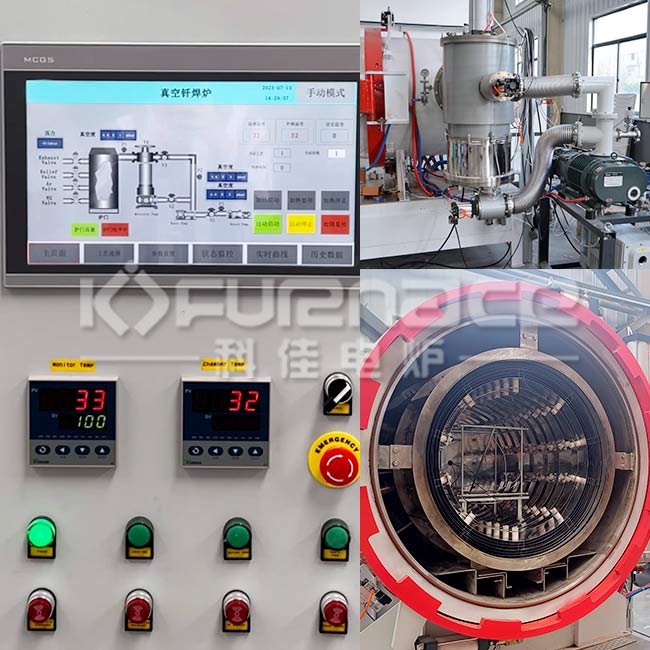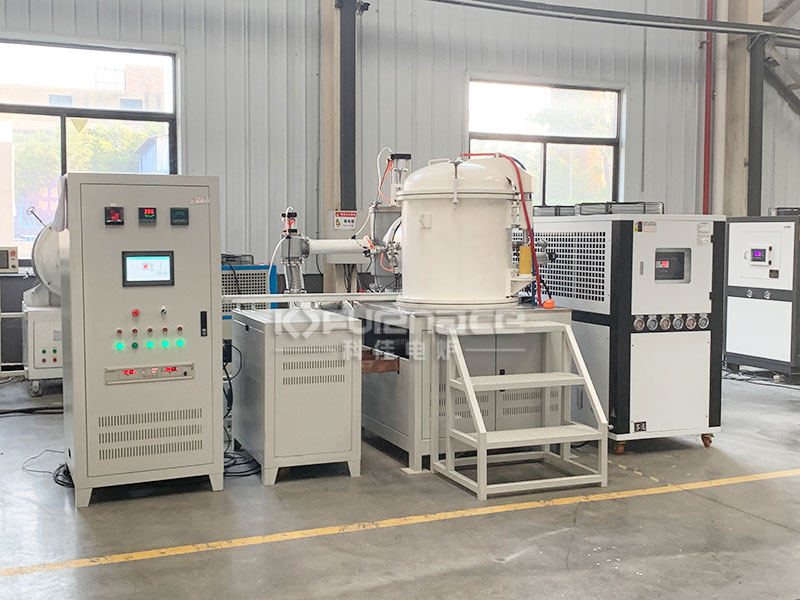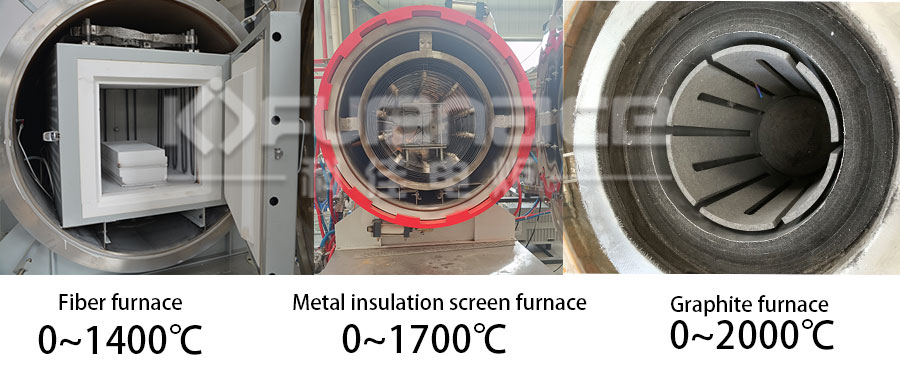A vacuum furnace is a device that uses a vacuum system to discharge some materials from the furnace cavity in a specific space, so that the pressure inside the furnace cavity is less than a standard atmospheric pressure, achieving a vacuum state in the furnace cavity space.

The main components of a vacuum furnace(Click on the image to view product details)
A vacuum furnace is composed of a furnace, heating elements, temperature control system, vacuum system, water cooling system, sealed furnace shell, etc. The furnace is mainly divided into stainless steel furnace, ceramic fiber furnace, molybdenum foil furnace, and graphite furnace, with rated temperatures ranging from 750 ℃ to 2200 ℃. Heating elements are mainly divided into resistance wires, silicon carbon rods, molybdenum wires and rods, silicon molybdenum rods, graphite, induction coils, etc., with maximum temperatures ranging from 750 ℃ to 2200 ℃.

Vertical graphite vacuum furnace(Click on the image to view product details)
The vacuum system consists of a vacuum valve, mechanical pump, diffusion pump, and Roots pump according to the required vacuum degree, with a maximum vacuum degree of generally 7 × 10-3Pa. The water cooling system is matched according to the size of the furnace to ensure the normal operation of the vacuum furnace. Sealed furnace shell welding requires good sealing performance to ensure the designed vacuum degree can be achieved.

The highest temperature corresponding to the vacuum furnace
Vacuum furnaces can be divided into 1200 ℃ vacuum furnaces, 1400 ℃ vacuum furnaces, and 1700 ℃ vacuum furnaces according to temperature.
